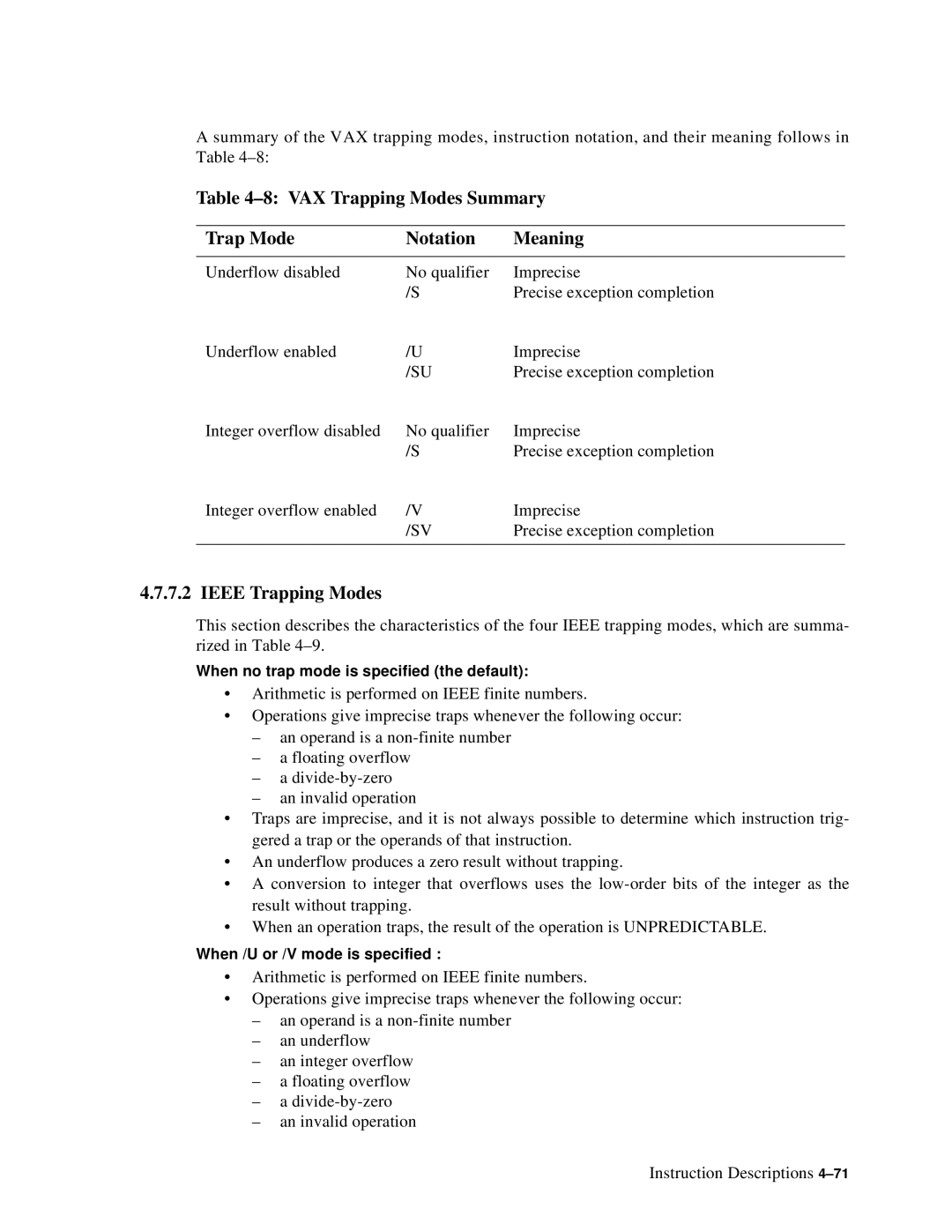A summary of the VAX trapping modes, instruction notation, and their meaning follows in Table
Table 4–8: VAX Trapping Modes Summary
Trap Mode | Notation | Meaning |
|
|
|
Underflow disabled | No qualifier | Imprecise |
| /S | Precise exception completion |
Underflow enabled | /U | Imprecise |
| /SU | Precise exception completion |
Integer overflow disabled | No qualifier | Imprecise |
| /S | Precise exception completion |
Integer overflow enabled | /V | Imprecise |
| /SV | Precise exception completion |
|
|
|
4.7.7.2 IEEE Trapping Modes
This section describes the characteristics of the four IEEE trapping modes, which are summa- rized in Table
When no trap mode is specified (the default):
•Arithmetic is performed on IEEE finite numbers.
•Operations give imprecise traps whenever the following occur:
–an operand is a
–a floating overflow
–a
–an invalid operation
•Traps are imprecise, and it is not always possible to determine which instruction trig- gered a trap or the operands of that instruction.
•An underflow produces a zero result without trapping.
•A conversion to integer that overflows uses the
•When an operation traps, the result of the operation is UNPREDICTABLE.
When /U or /V mode is specified :
•Arithmetic is performed on IEEE finite numbers.
•Operations give imprecise traps whenever the following occur:
–an operand is a
–an underflow
–an integer overflow
–a floating overflow
–a
–an invalid operation
Instruction Descriptions
